In pictures: one city, three gardens
From an anti-capitalist urban allotment to a mainstay of the tourist trail, join me on a photographic journey around one of the loveliest garden cities in Europe
You’re reading The Earthworm, a newsletter that takes a sideways look at the world of gardens, gardening, horticulture and all that good green stuff. If this is your first time here, you can catch up on anything you’ve missed by following this link. Subscribe now for free and join the community! You can also support me and my work on The Earthworm by upgrading to a paid subscription at any time – just tap the button below.
Barcelona is a city famous for its architecture, its nightlife, its football team, but not perhaps its gardens. Which is a shame; a travesty even. So as my Catalan adventure draws to a close, I thought I’d share with you some horticultural highlights, in the form of ‘one city, three gardens’.
Park Güell
As seen on postcards, fridge magnets, souvenir teaware, and countless zillions of Instagram posts, Park Güell is one of Barcelona’s most iconic and most visited destinations. And rightly so.
Designed by Antoní Gaudí – the modernist architect responsible for La Sagrada Familia, among other stops on the open-top Bus Turístic – Park Güell has been open to the public since 1926 and a UNESCO World Heritage Site since 1984.
There’s a lot not to love. The crowds are horrible. The jostling for position for optimal angle of selfie is horrible. The entrance fee is horrible. But if you can relax into your surroundings and see past your fellow tourists, you are rewarded with a twisty turny voyage through an enchanting fairytale kingdom. Pillars of melting rock; mosaic lizards; Hansel and Gretel cottages with gingerbread walls and marzipan rooftops; and of course panoramic views of the city below.
The planting itself – a canopy of Aleppo pines, carob and olive trees, underplanted with shrubs including viburnum, rosemary and pittosporum – is apparently fairly modern, after a lot of vegetation fell victim to extreme weather events in 2009 and 2010. But it has had plenty of time to establish itself, and the park is large enough that you can kid yourself for a moment or two that you have stumbled upon a secret forest kingdom of magic and wonder, hidden inside the metropolis.
Like all of Gaudí’s work, Park Güell is testament to one person’s extraordinary capacity for imagination and creativity. But whereas Gaudí’s buildings, dotted around the city, stop you in your tracks because of their out-of-place weirdness, the park does something very different. It swallows you up and transports you, for a moment, to another world altogether.
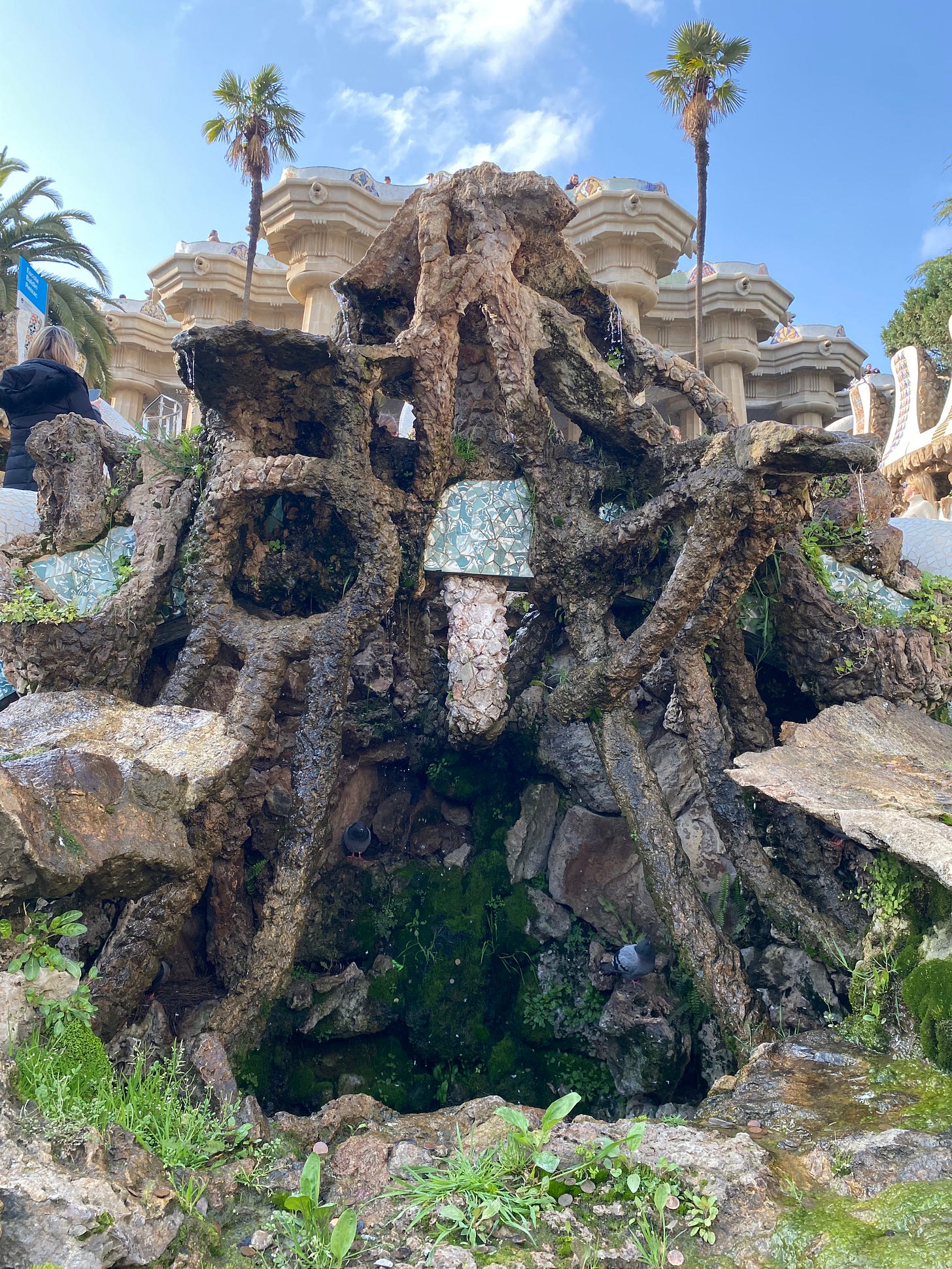
Montjuïc
OK, so including Montjuïc in this round-up is sort of cheating. Montjuïc isn’t actually a garden, but a hilltop district which marks the southern boundary of central Barcelona. Having said that, Montjuïc is basically just one giant garden.
Yes, it is home to the Olympic Park (not really a park), from when Barcelona hosted the games back in 1992; and yes, it is the city’s unofficial museum district, including the Fundació Joan Miró Museum, the Mies van der Rohe pavilion, and the Museu Nacional d’Art de Catalunya. But all of these grand public buildings are linked by a series of interconnecting gardens, each with their own unique character.
The historic botanic gardens, where a carpet of Acanthus mollis fills the gaps between large, textural shrubs, offer an understated celebration of Mediterranean plants. Next door, you’re met with the juxtaposition of the highly formal – think topiary and sculptural centrepieces – of the Jardins de Joan Maragall. Then there’s the steep, snaking paths of the Jardins de Laribal, which ascend the hill like so many contour lines on an OS map. Not to mention the sculpture garden, the modern botanic gardens, the bonsai collection, and on and on, which I didn’t have even nearly enough time to visit on this occasion.
Ca La Trava, l’hort okupat
The ultimate guerrilla garden, Ca La Trava is an allotment-come-squat in the heart of Vila de Gracia, which is itself the epicentre of gentrification in Barcelona. The garden invites you in, but with a warning: ‘This is an anticapitalist autonomous project against gentrification, not a landscape for your “insta” pictures!’
As well as the fierce Catalan independence movement – which you’re probably well aware of – there is also a fierce anti-tourism movement in Barcelona. It would be unfair to dismiss what’s happening in Gracia as identikit hipsterdom, because it does seem to have an identity and personality of its own. And yet it is full of experimental cocktail bars, vegan delis, legions of expats and the rapidly inflating property prices that you might associate with all of these things. Many locals have been priced out of the area (and in fact the entire city), and the tourism industry and its associated trappings – namely AirBnb – are largely held to blame.
As someone who is effectively a tourist here despite my familial ties (full disclosure: I am staying in an AirBnb), and whose own family is passionately pro-Catalan independence, and yet who has lived through the horror show of Brexit, my own feelings on these complex and intertwined subjects are mixed, to say the least.
But anyway, I have a lot of respect for the people behind this small urban allotment in a lot that will surely, inevitably, one day end up being built over with a block of luxury apartments. Part-market garden, part-urban oasis, all-political statement, I hope that the ideas and ideals that Ca La Trava represents don’t disappear when the garden certainly does.

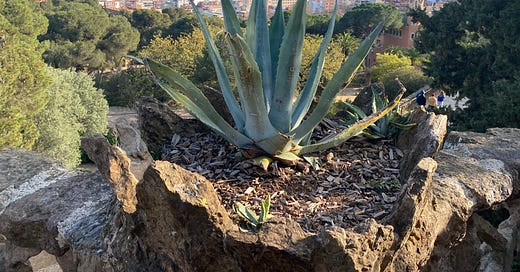


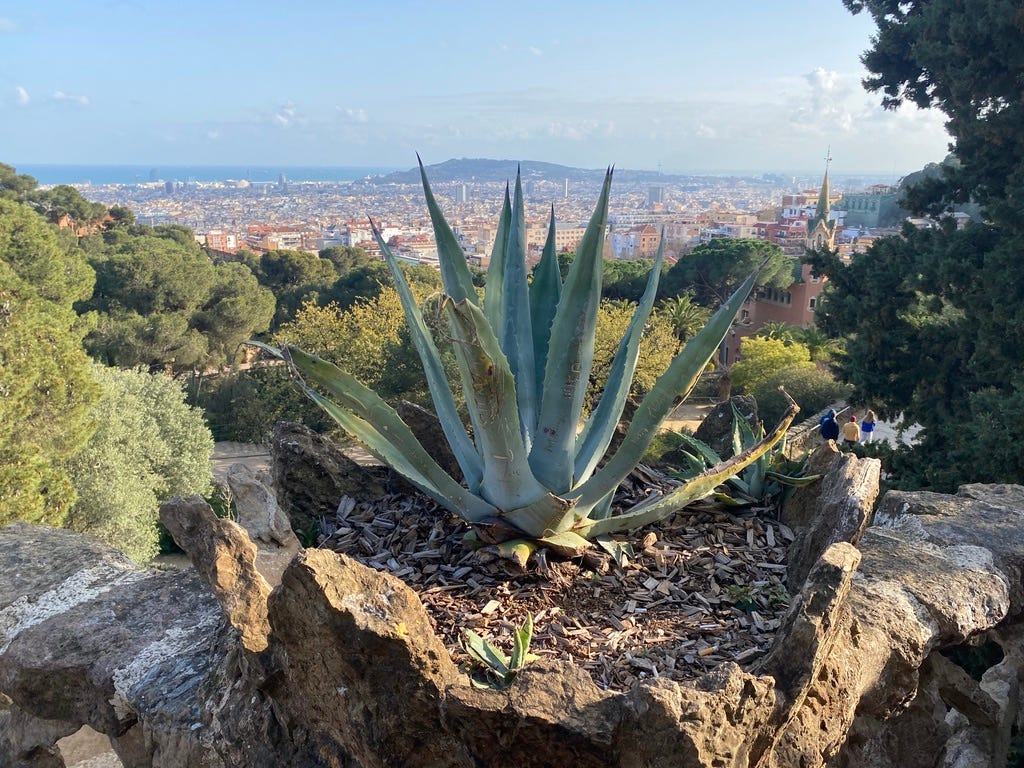
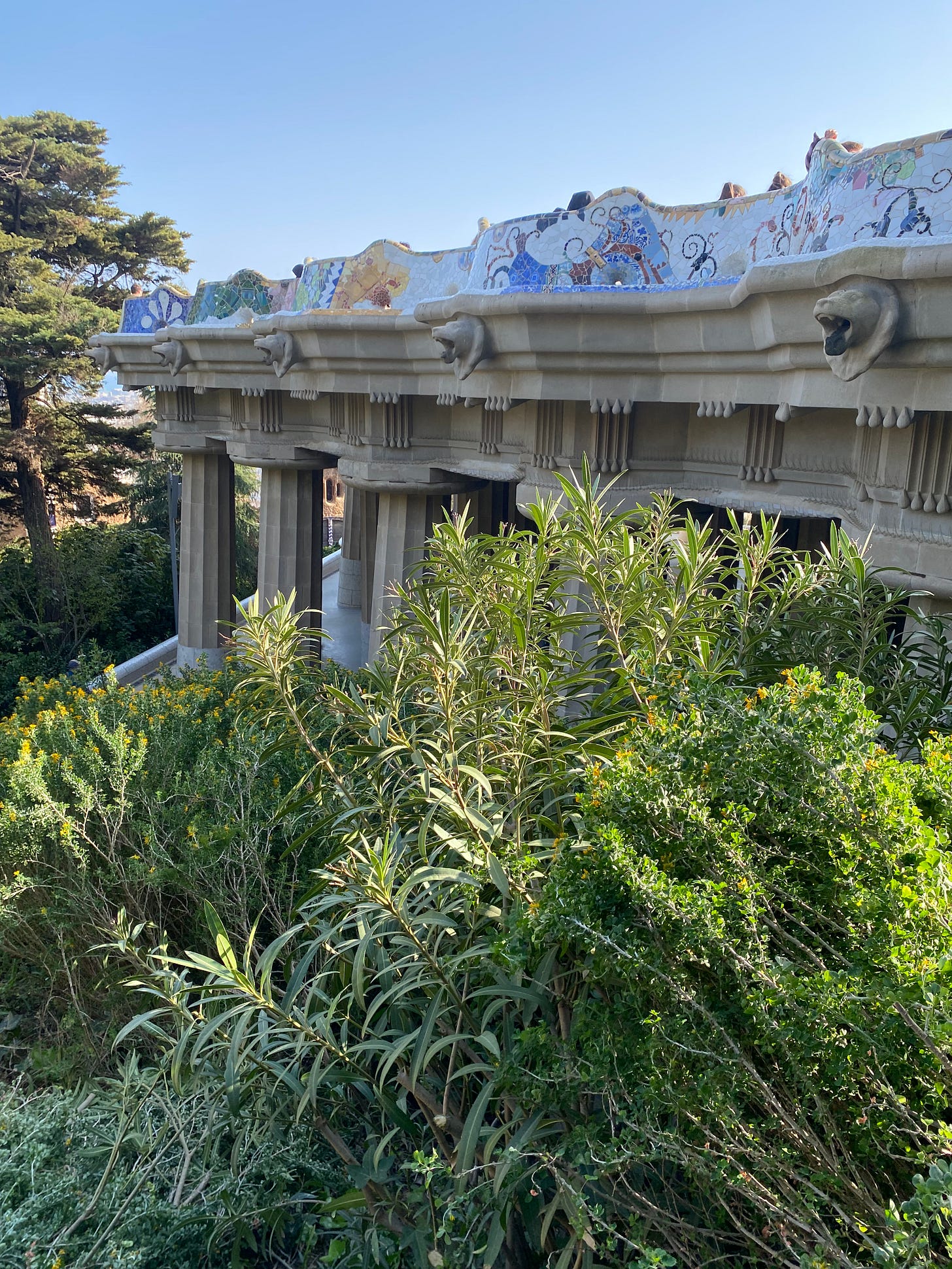
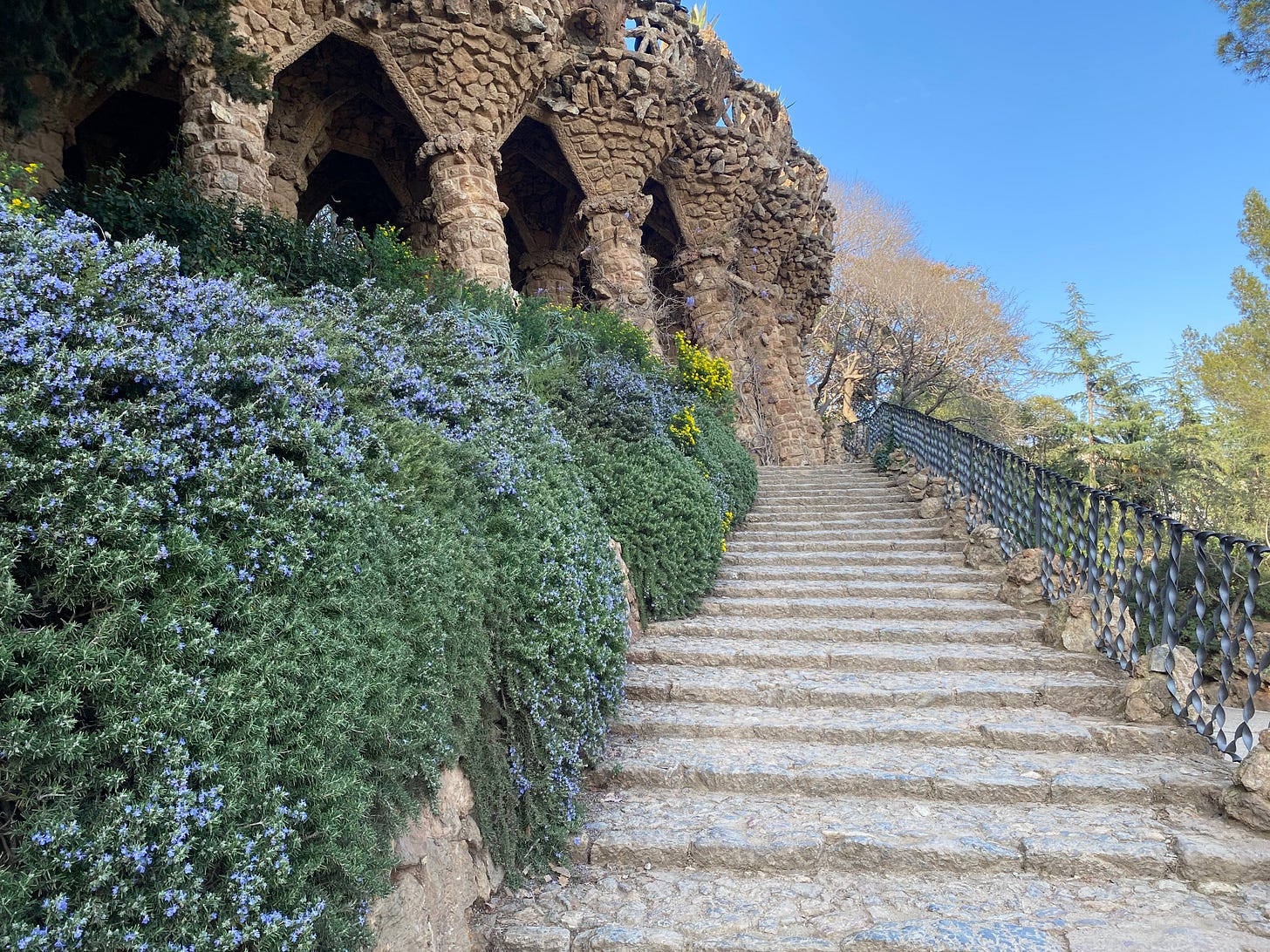
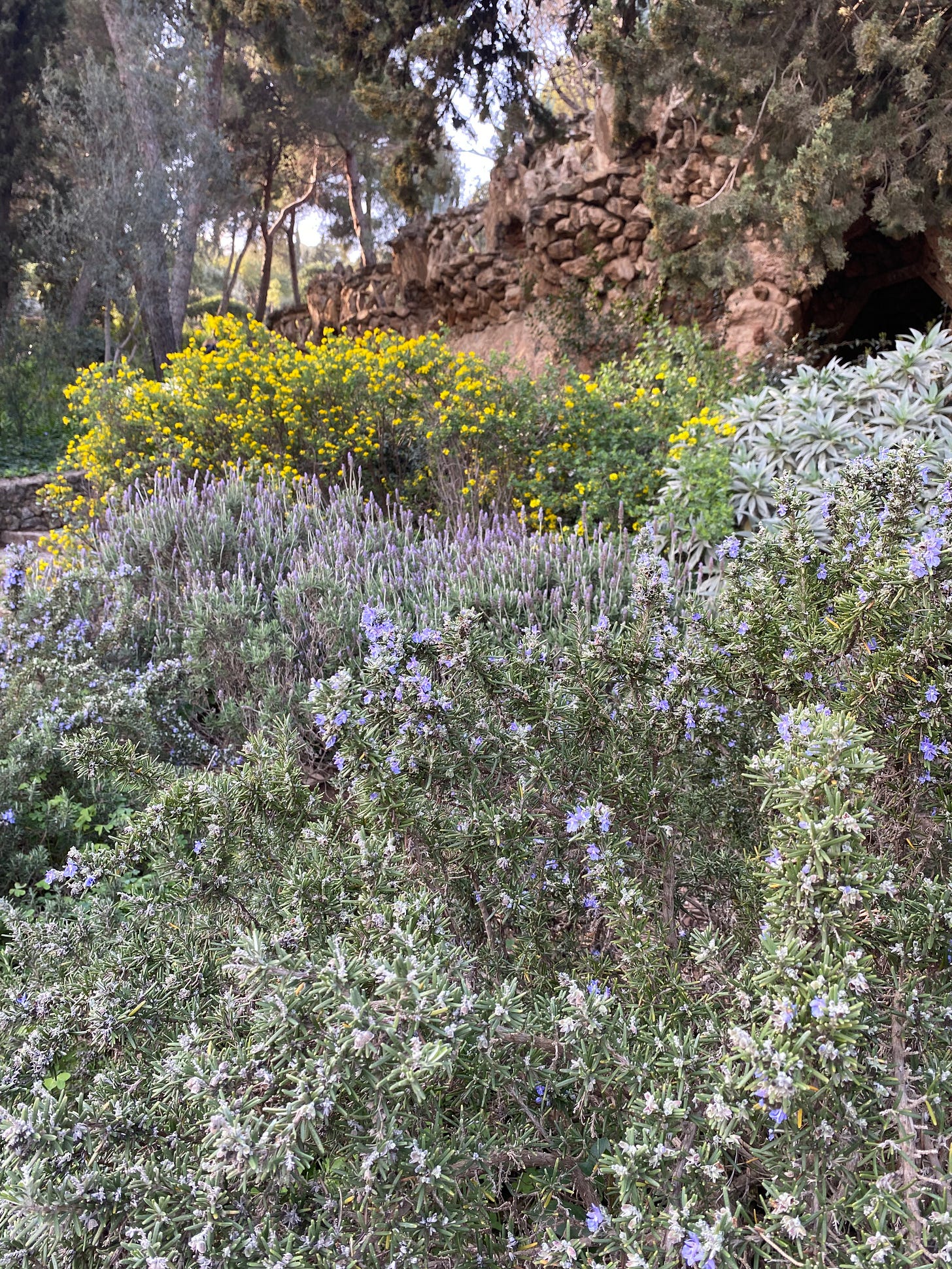

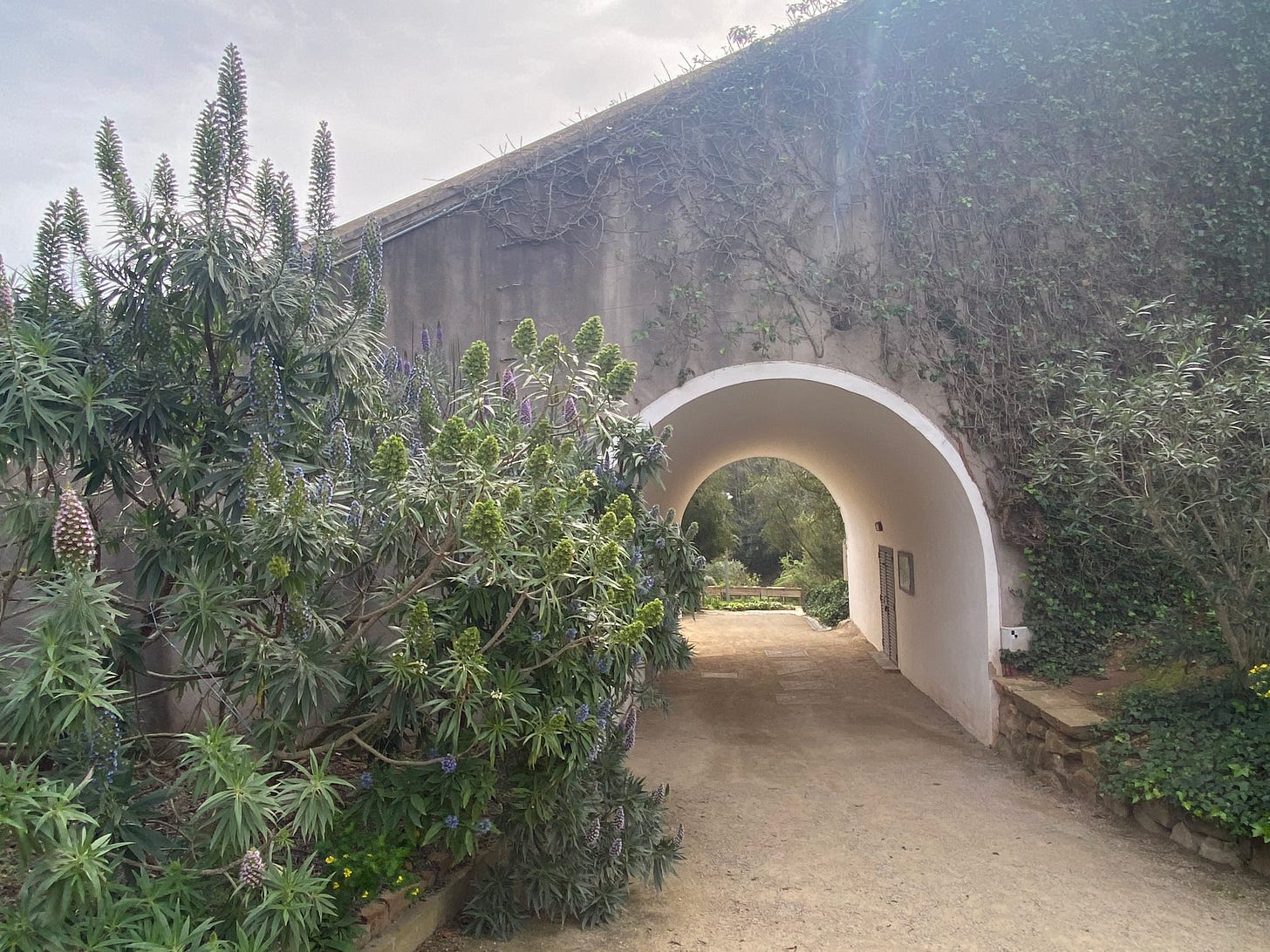
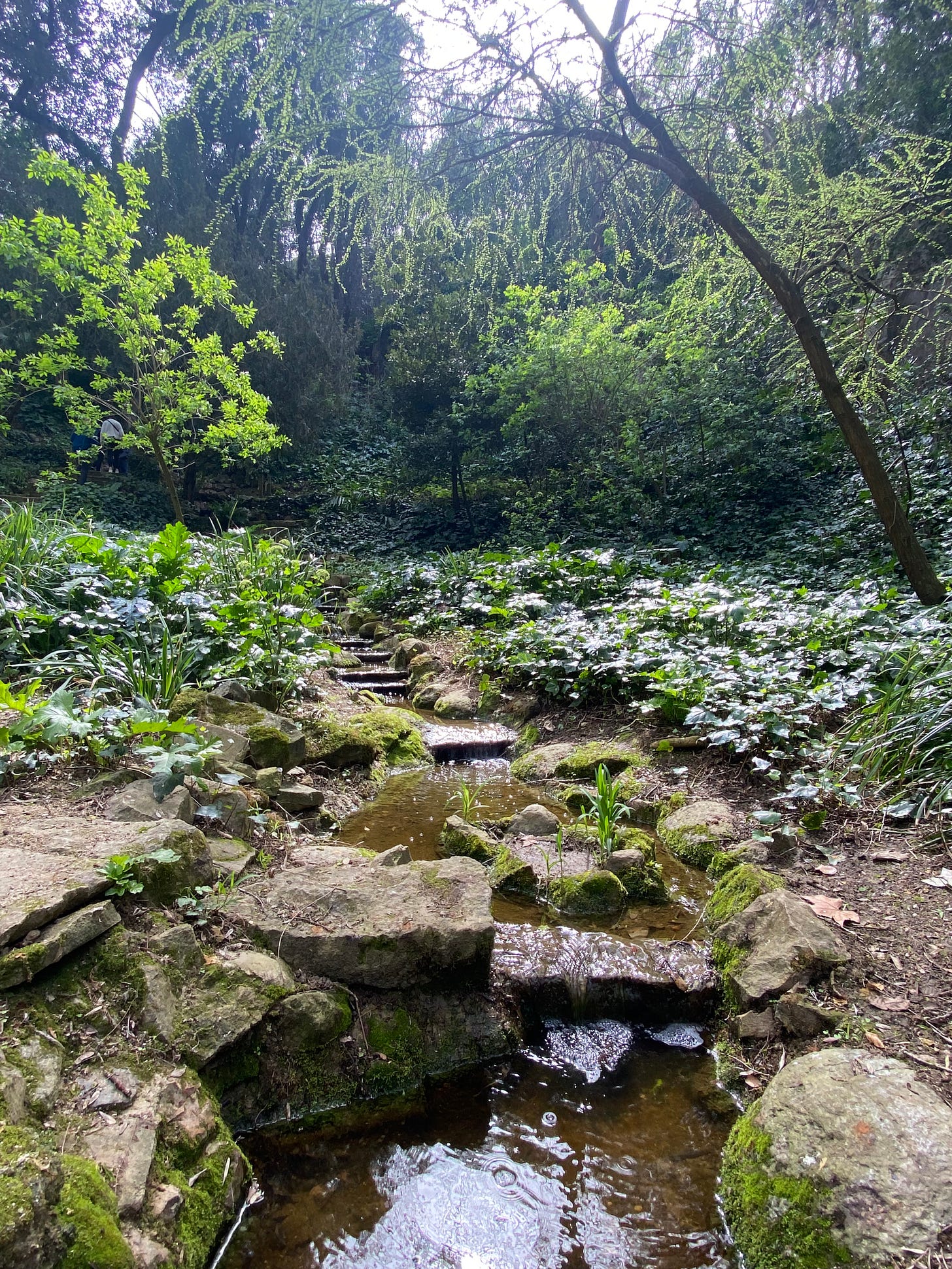
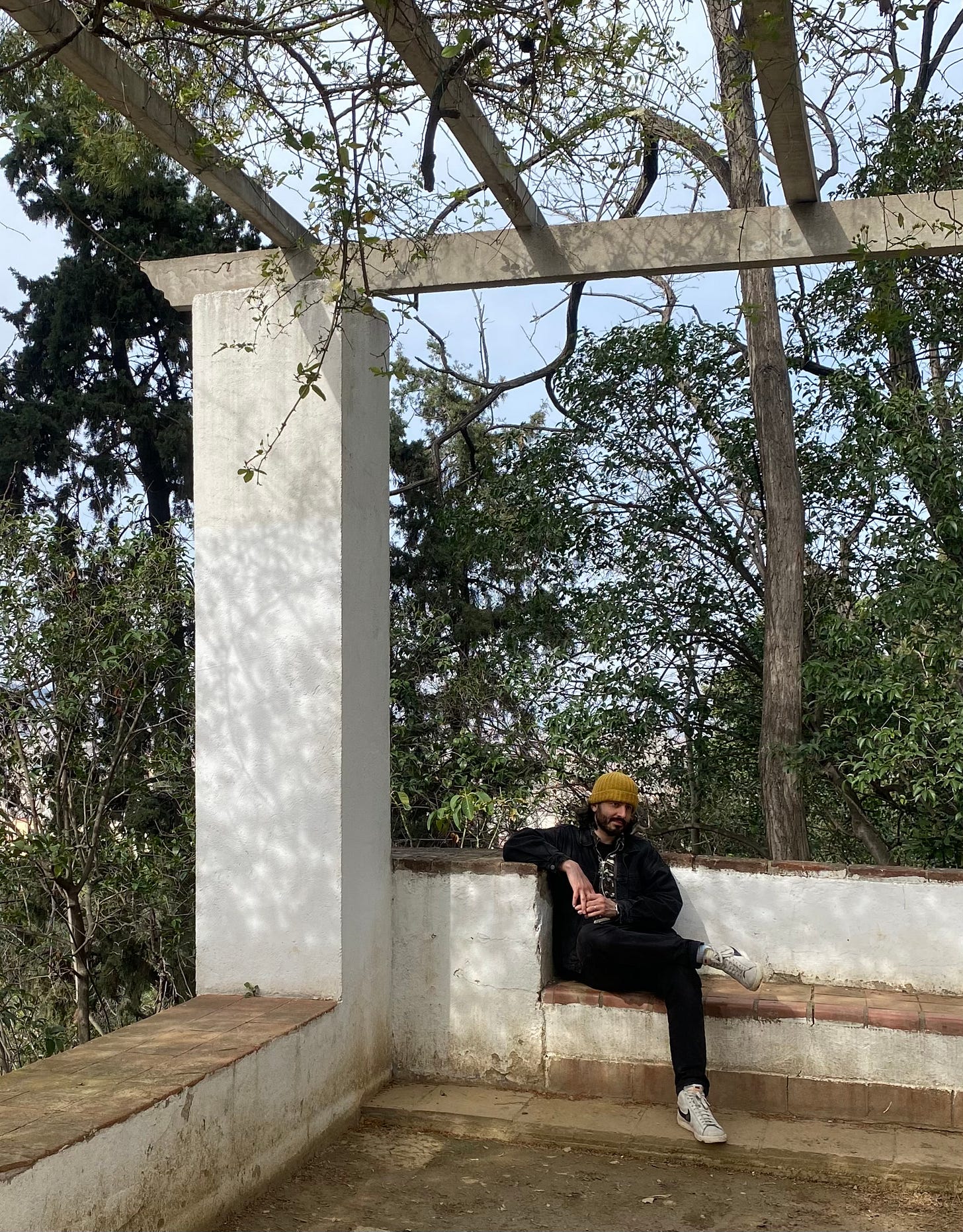
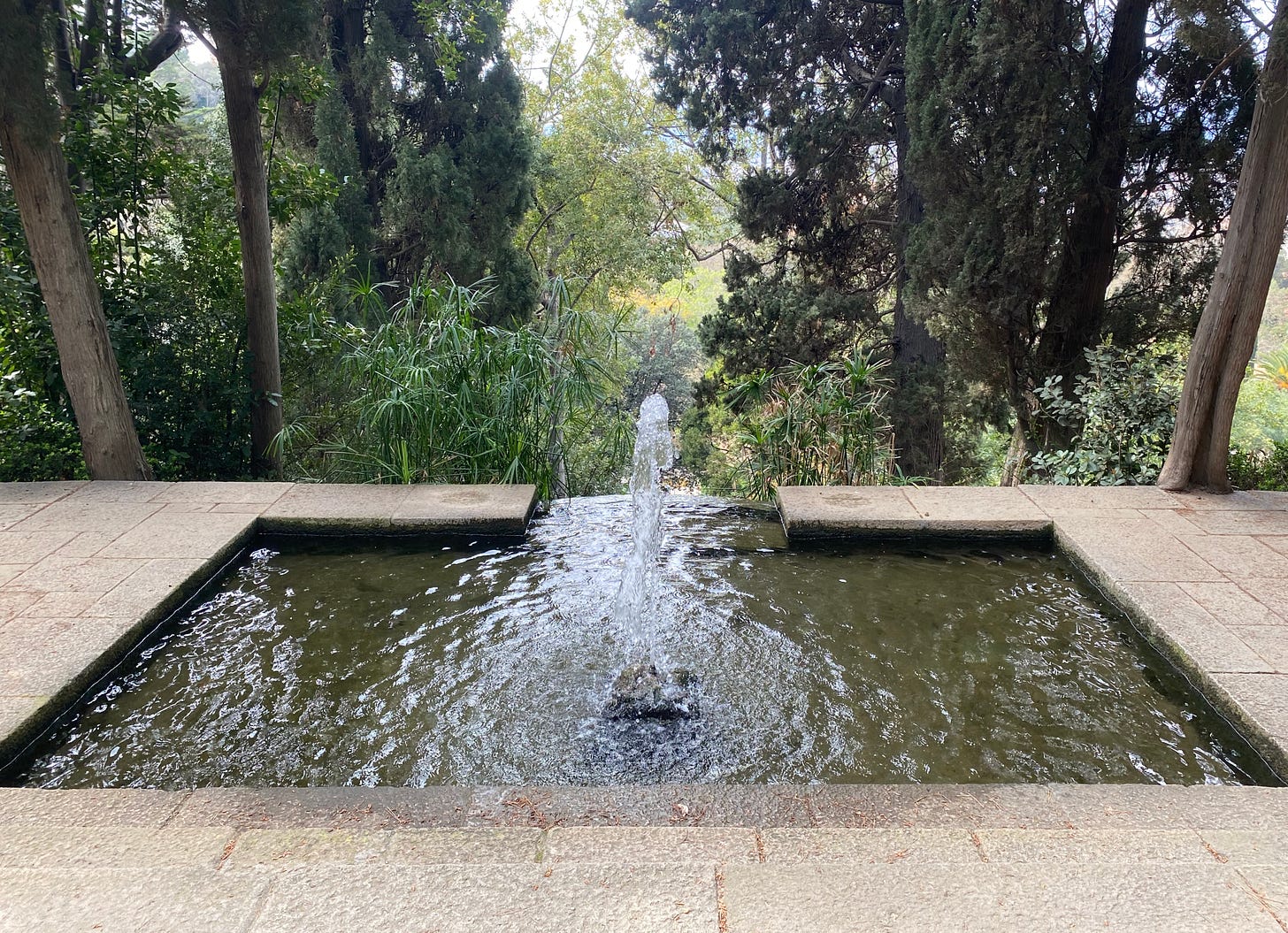
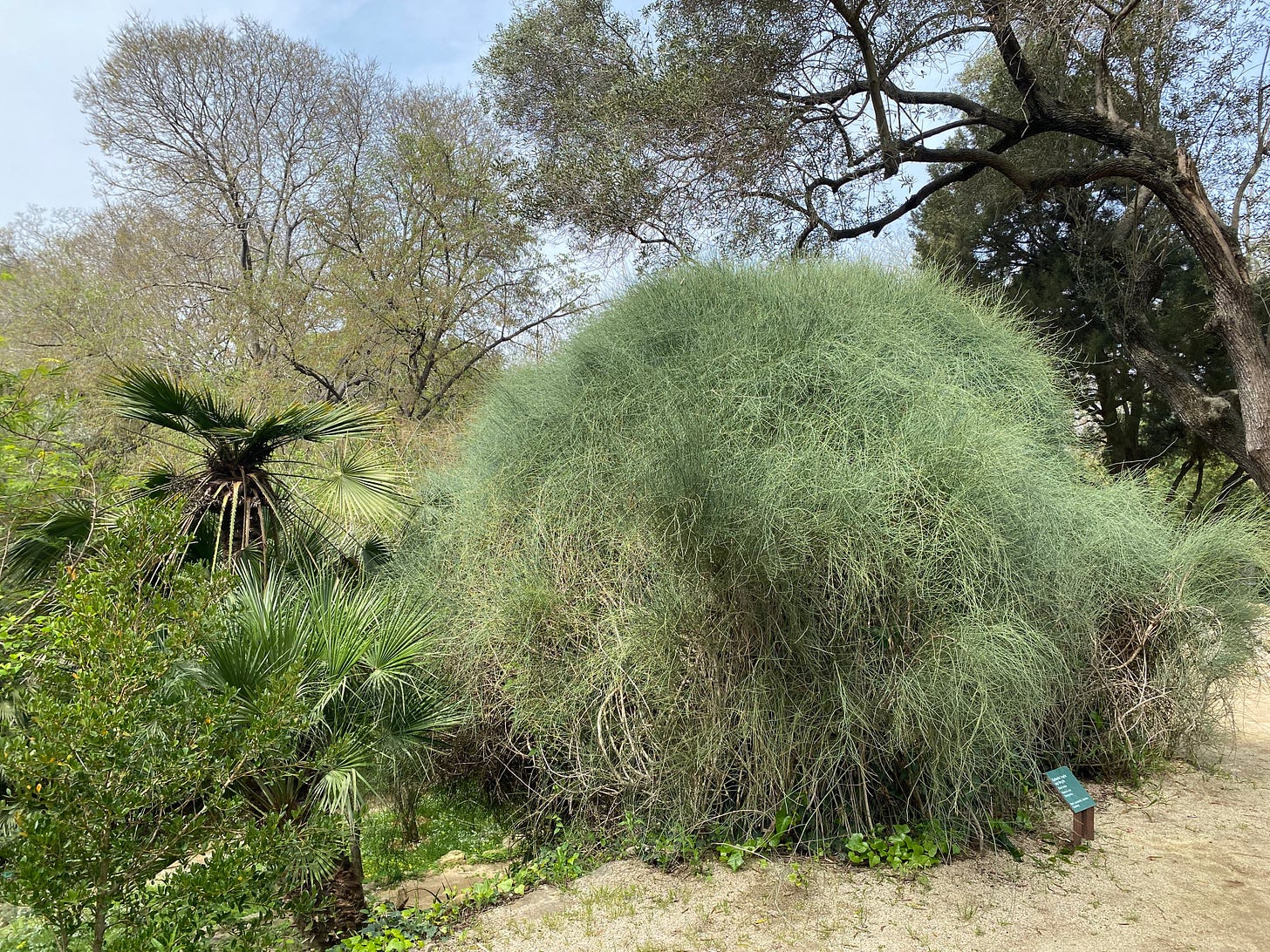
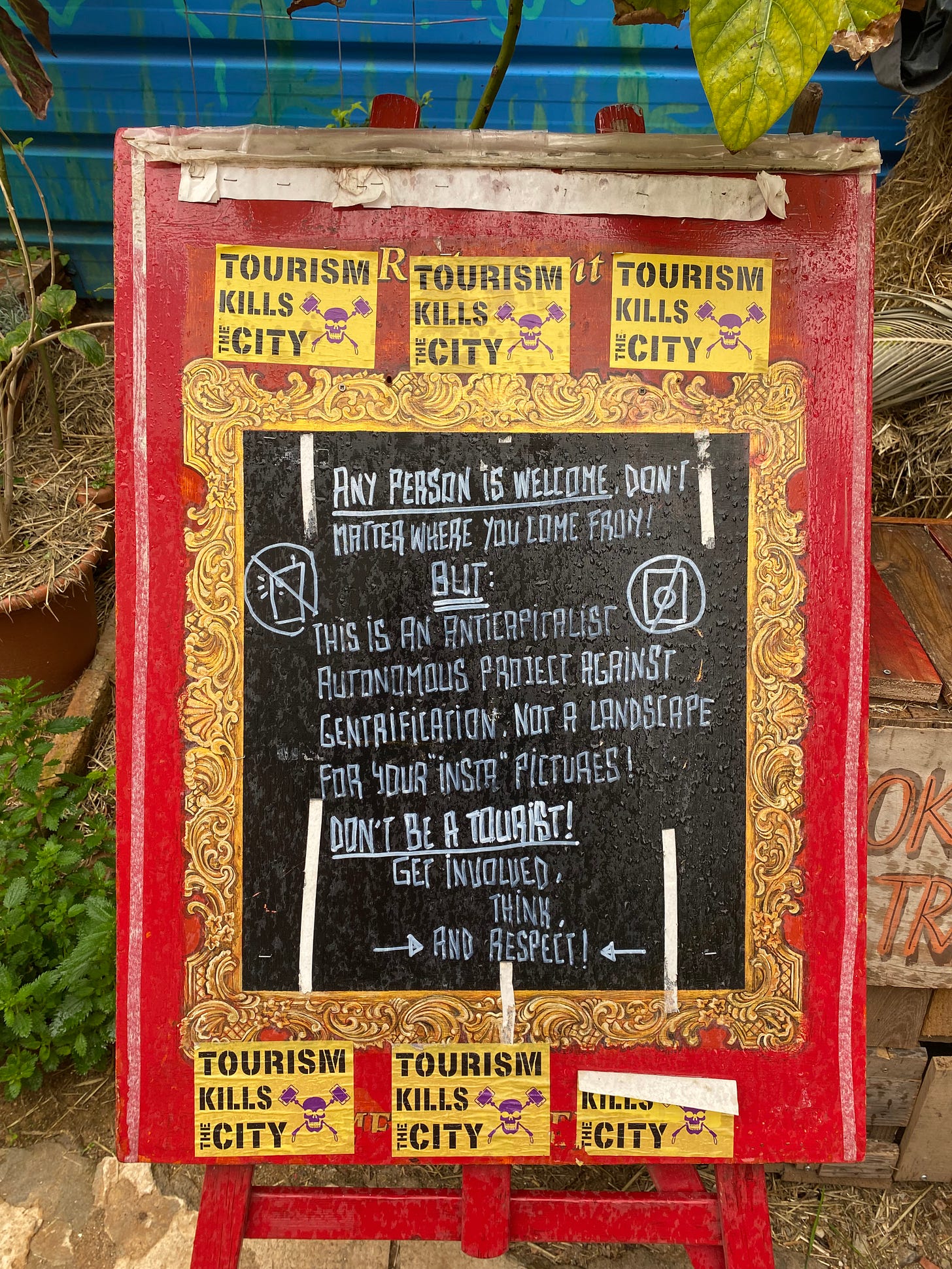
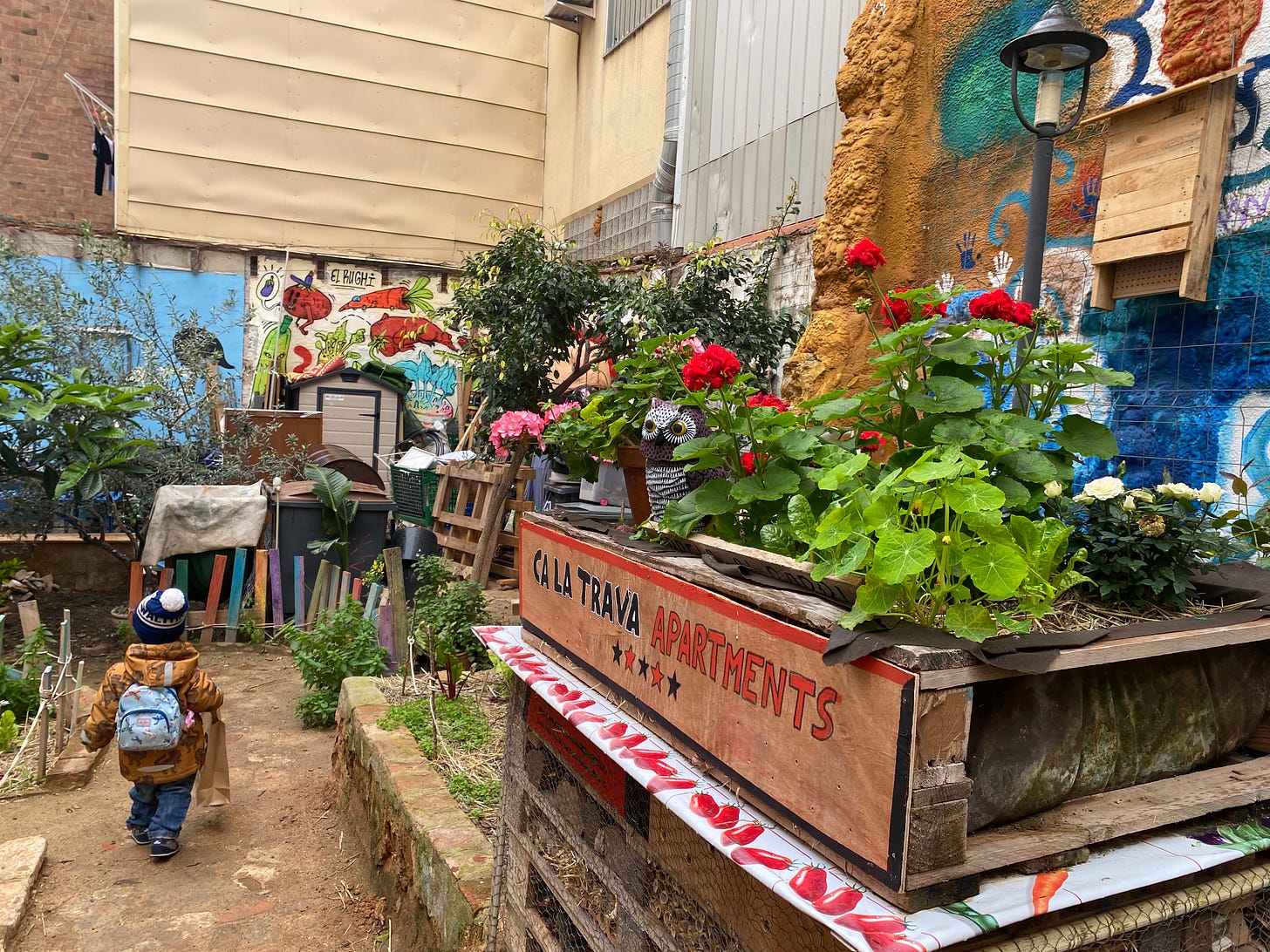
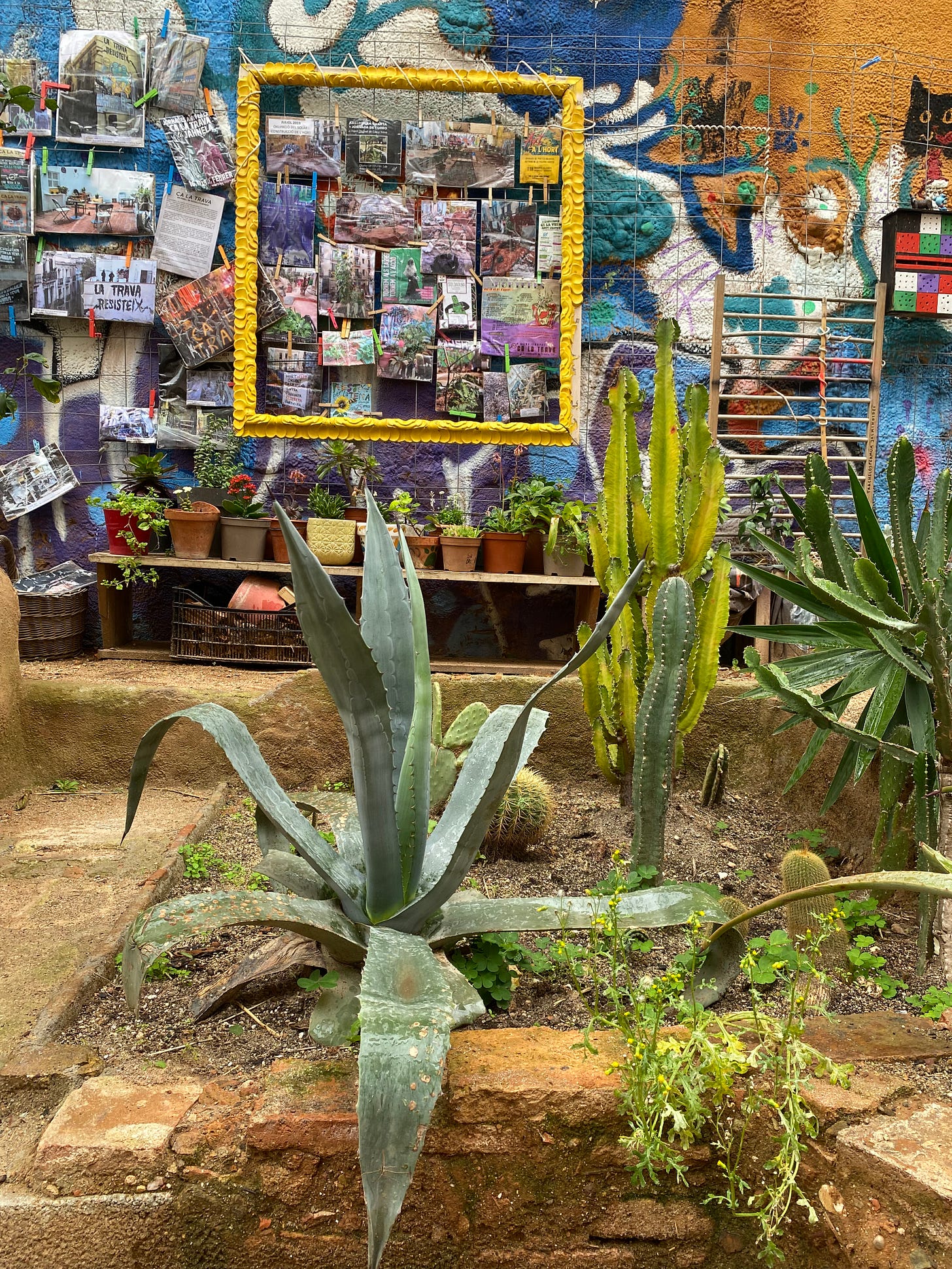
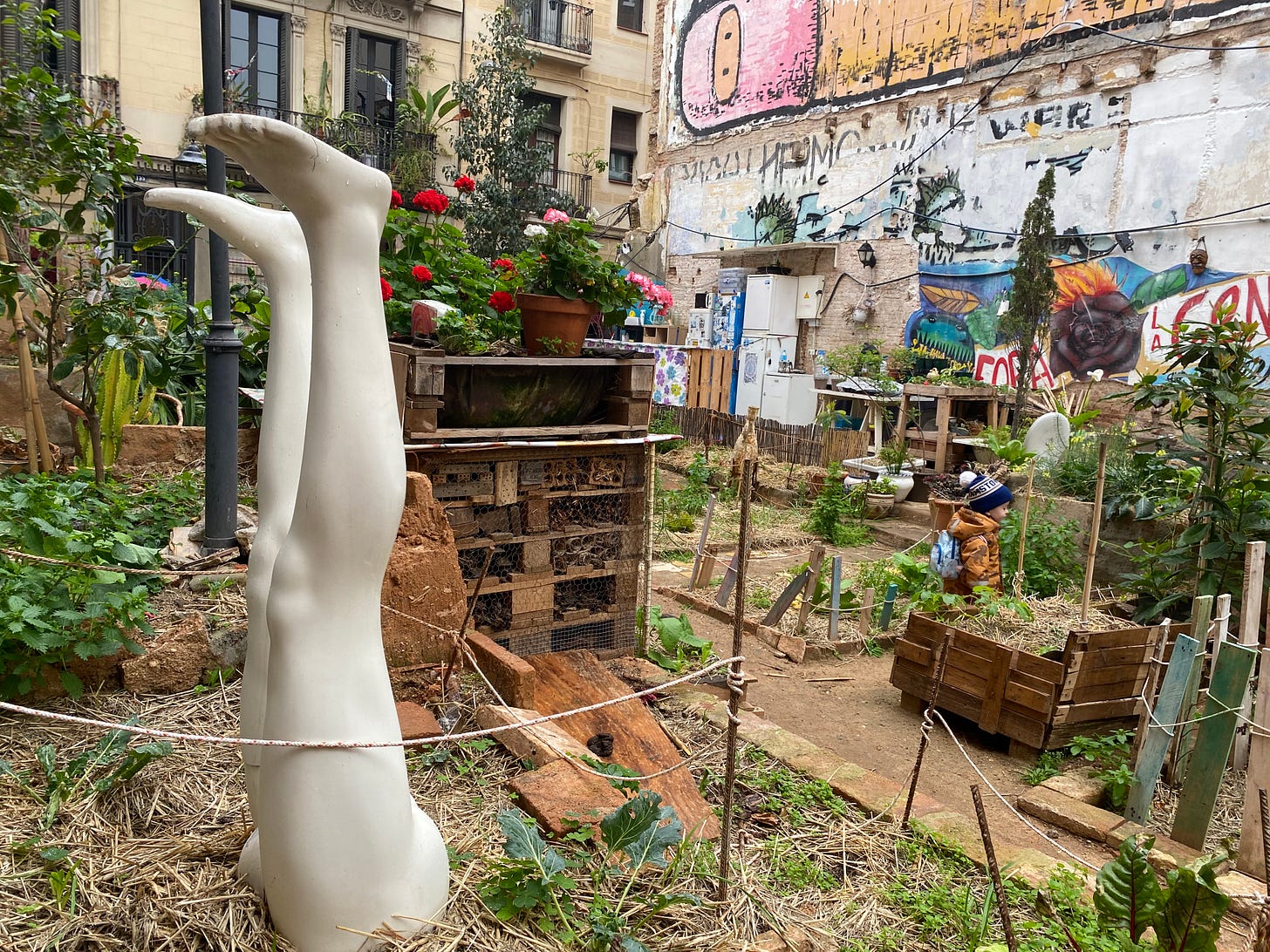

What a delightful tour! Seeing all that blooming rosemary reminded me to check on our rosemary in the garden which definitely did not live through this past Pittsburgh winter.